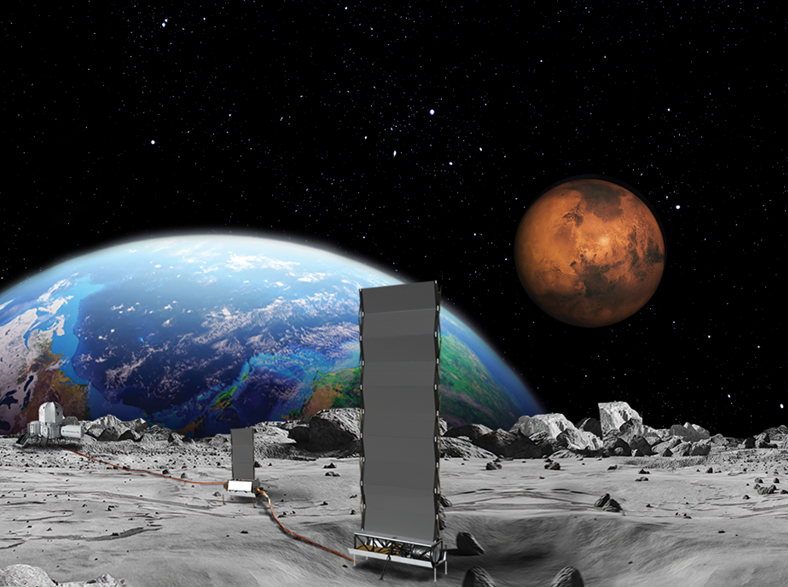The head of Russia’s space agency has revealed plans for an ambitious joint project with China to establish a nuclear power plant on the moon by 2035.
In a recent lecture to students, Roscosmos CEO Yury Borisov disclosed that Russia and China were seriously considering installing a power reactor on the lunar surface within the timeframe of 2033 to 2035.
This initiative is rationalized by the necessity for a dependable electricity supply system for potential lunar settlements, with concerns raised about solar panels’ limitations in meeting this need.
Borisov additionally pointed out that Russia opposed the placement of nuclear weapons in space, aligning with President Vladimir Putin, who previously refuted US accusations regarding the Kremlin’s purported intentions for such weaponry.
The Russian official said the proposed mission of installing a nuclear power plant on the moon would necessitate advanced automation, and key technological solutions are nearly ready for deployment.
This collaborative effort stems from a memorandum of mutual understanding signed in March 2021 between Russia’s State Space Corporation Roscosmos and the China National Space Administration (CNSA), outlining cooperation in establishing the International Lunar Research Station (ILRS).
The project’s initial stages involve selecting a suitable lunar site and verifying technologies essential for safe lunar landings. Russia will utilize its Luna-Glob lander, while China plans to contribute missions such as Chang’e 6, Chang’e 7, and Chang’e 8.
Subsequent missions will focus on delivering modules necessary for lunar exploration, with eventual manned expeditions to follow. The projected timeline anticipates the first lunar mission launching in 2026 and the completion of the project slated for 2028.
Along with these developments, reports have emerged indicating that the Chinese space agency is contemplating the establishment of a comprehensive surveillance system for its lunar research station.
Inspired by the success of the Skynet project, China’s extensive terrestrial video surveillance network boasting over 600 million cameras, the planned system on the moon aims to monitor lunar assets and activities in detail.
Race To Deploy Nuclear Power Plant on the Moon
Various space agencies, including NASA, have long explored the concept of using nuclear reactors to power future lunar colonies.
In the aftermath of the historic Apollo 11 mission that landed humans on the moon in 1969, Apollo 12 astronauts employed a nuclear generator to supply electricity for scientific experiments conducted on the lunar surface.
The reliance on solar power presents challenges, particularly during the 14-day lunar nights, highlighting the need for alternative energy sources for both manned and unmanned moon missions.
This concern has gained prominence as NASA advances plans to return humans to the Moon under its Artemis mission. The initial landing is now scheduled for 2026.
In 2022, NASA embarked on a collaborative effort with the US Department of Energy to evaluate “concept proposals” for a nuclear power system with the aim of potential deployment by the end of the decade.

Contracts were awarded to three companies — Lockheed Martin, Westinghouse, and IX (a joint venture of Intuitive Machines and X-Energy) — to initiate the design phase of a reactor and associated subsystems. The overarching goal is to establish a sustained human presence on the lunar surface for at least a decade.
Recent developments indicate that NASA is progressing in the design phase of the Fission Surface Power Project, which aims to develop a small, electricity-generating nuclear fission reactor tailored for lunar application.
This endeavor is significant for NASA’s Artemis program, which facilitates lunar exploration efforts. The lunar south pole, characterized by permanently shadowed regions believed to contain water, ice, and other valuable resources, stands out as a potential hotspot for deploying such reactors.
On the other hand, while the extent of China’s advancements in nuclear power solutions for lunar missions remains uncertain, Chinese scientists revealed plans in 2022 to develop a nuclear energy system to meet the enduring energy requirements of a lunar station.
The system is projected to produce one megawatt of electricity, which will support crucial functions such as communications and aid deep space missions by transmitting signals between Earth, Mars, and other destinations.
As space agencies globally push the boundaries of lunar exploration, the quest for inventive energy solutions highlights the pivotal role of nuclear power in sustaining forthcoming lunar endeavors.
- Contact the author at ashishmichel(at)gmail.com
- Follow EurAsian Times on Google News